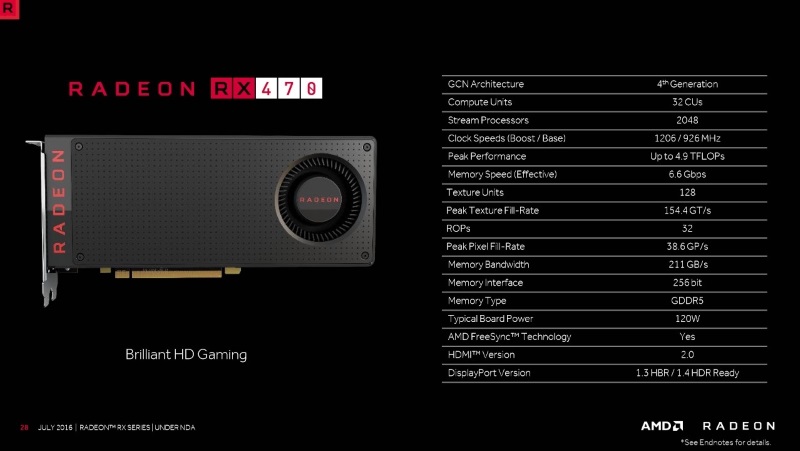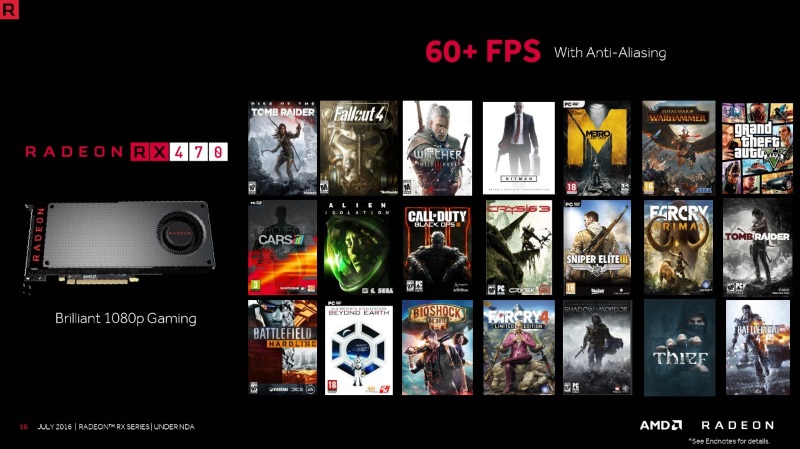
As expected, AMD has today released its mainstream Radeon RX 470 GPU, which is a slightly cut-down version of the popular Radeon RX 480. This new launch allows AMD to target gamers who are more price-sensitive and who do not anticipate playing games at resolutions higher than 1920×1080. Radeon RX 470 graphics cards will be priced beginning at $179 (approximately Rs. 11,967 before taxes and duties). AMD’s official recommended price for 4GB Radeon RX 470 cards in India is Rs. 15,990. However, third-party manufacturers will set their own prices.
AMD is positioning this GPU as suited for gamers and fans of game streaming as well as VR enthusiasts. The company claims that 84 percent of all graphics cards sold cost between $100 and $300, based on its own data.
The new Radeon RX 470 is based on the same Polaris-10 GPU design as the Radeon RX 480, but with some of its hardware disabled leading to lower overall performance at a lower price point. The GPU is made up of 5.7 billion transistors overall, manufactured on a 14nm process. There are 2,048 programmable units which the company calls “stream processors”, running at between 926MHz and 1206MHz depending on the workload. Radeon RX 470 graphics cards will have 4GB of GDDR5 RAM on a 256-bit memory bus.Total board power draw is rated at 120W, and AMD’s reference design requires one 6-pin PCIe power connector. This should keep it well below the PCIe power draw threshold which caused problems for the RX 480. Just like the Radeon RX 480, this reference design also drops legacy DVI output in favour of three DisplayPort connectors and one HDMI port. Third-party manufacturers including XFX, Sapphire, Asus and MSI are free to ship cards with custom power circuitry and different output configurations.
 AMD is touting the next-generation capabilities of its Polaris architecture, in the form of Vulkan and DirectX 12. Performance in Doom is said to go up by 30 percent when using Vulkan, while Total War: Warhammer and Ashes of the Singularity show gains of 20 percent and 40 percent respectively when using DirectX 12 rather than DirectX 11. Tests developed since the initial launch of the Radeon RX 480, such as 3DMark Time Spy, have shown that performance can in fact improve significantly.
AMD is touting the next-generation capabilities of its Polaris architecture, in the form of Vulkan and DirectX 12. Performance in Doom is said to go up by 30 percent when using Vulkan, while Total War: Warhammer and Ashes of the Singularity show gains of 20 percent and 40 percent respectively when using DirectX 12 rather than DirectX 11. Tests developed since the initial launch of the Radeon RX 480, such as 3DMark Time Spy, have shown that performance can in fact improve significantly.
The Radeon RX 470 also supports HDR video output and AMD’s FreeSync variable refresh rate standard, and the new WattMan overclocking tool which is now integrated into the Radeon Crimson desktop software.
This launch should be followed up by the even lower-end Radeon RX 460, which is based on a smaller GPU codenamed Polaris-11. The two GPUs will allow AMD to target the mass market, whereas competitor Nvidia started at the top end with its incredibly powerful GeForce GTX 1080 and has continued to put out premium offerings in the form of the GeForce GTX 1070, GTX 1060, and Titan X, all in the past few months.
[“source-ndtv”]







